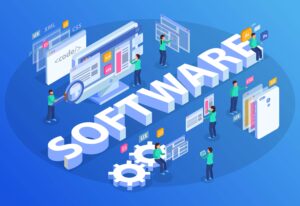What makes someone click “buy” after browsing an e-commerce website for the perfect gift? Why does a user rapidly close a mobile app after only a few seconds? As product designers and developers, answering questions like these is key to creating intuitive user experiences that delight and convert.
But peeking inside the minds of target users is easier said than done. That’s where UX research methods swoops in to reveal what users do and why they do it.
With qualitative and quantitative data around user behaviors, emotions, and motivations, UX researchers transform raw observations into actionable insights for designing rewarding products and services.
In this complete guide, we’ll explore 15 research techniques to light the way when the path to an exceptional user experience seems unclear.
What is UX Research?
Before discussing specific approaches, let’s establish a baseline definition of user experience (UX) research.
UX research focuses on understanding user behaviors, needs, and motivations through observation techniques, task analysis, and other feedback methodologies. The learnings generated, often represented via personas and journey maps, support designers and stakeholders in making products intuitive, engaging, and meaningful for target users.
Some common questions that UX research tackles:
- How easily can new users navigate our website’s checkout flow?
- What pain points arise when customers try to activate their new software?
- Why did our latest marketing email see lower open rates quarter-over-quarter?
There are two core categories of UX research:
Attitudinal Research:
Focusing on what users think, feel, and believe. Attitudinal research uncovers qualitative insights through more conversational techniques, like interviews and surveys.
Behavioral Research:
Concentrating on what users do. Behavioral research relies more on observation in labs and real-world settings to reveal how users interact with products and services.
Top 15 UX Research Methods
1. User Interviews
Interviews allow researchers to have in-depth, one-on-one conversations to explore customer attitudes, needs, behaviors, and pain points. Interviews generally last about 1 hour and involve both close-ended and open-ended questions about key topics.
Sample interview questions may include:
- Walk me through how you accomplished [X task] today.
- What challenges or pain points arose during that process?
- What stood out as the most frustrating portion?
- What suggestions do you have for improvement?
Key techniques like verbal probing help researchers gather additional detail and clarity around interviewee responses.
2. Usability Testing
Usability testing lets researchers observe participants firsthand as they perform pre-determined tasks using a product prototype or existing interface. Sitting one-on-one with users allows teams to identify usability issues, gather feedback, and assess whether the product meets core user needs.
During a usability test, researchers may ask users to:
- Find a specific product page starting from the home page
- Add items to a shopping cart
- Edit account preferences
- Provide open-ended feedback at multiple touchpoints
Everything is documented and later analyzed to turn qualitative observations into recommendations to enhance UI design and functionality.
3. Surveys and Questionnaires
For broader market research, surveys help gather large samples of quantitative and qualitative data from existing or potential users regarding behaviors, attitudes, preferences, etc. Through both closed- and open-ended questions, surveys can reveal user perceptions about brands, products, features, messaging, and more.
Some examples include:
- Product Reaction surveys: Gather first impressions of a website redesign, prototype, or new feature set.
- Concept tests: Assess user reception to potential branding, positioning, pricing, etc., before making large investments.
- Brand tracking surveys: Continuously monitor key metrics like awareness, consideration, associations, and loyalty over time.
- Win/loss surveys: Understand why accounts chose competitor offerings over your own.
Online survey tools make it simple to reach large, diverse samples and turn insights around rapidly.
4. Card Sorting
Card sorting helps researchers derive structure from chaos. By having users organize topics and tasks into logical groupings, teams gain valuable perspectives on users’ mental models to then inform content and navigation priorities.
Participants organize topics printed on cards into groups that make sense to them, then name each group. Researchers compile participants’ card sorts to reveal commonalities and differences in how users see relationships between content or tasks.
This approach helps teams design:
- Website menus and priority pages
- Mobile app navigation and workflows
- Features within software tools
- Structure for support documentation
Both open and closed card sorts provide unique benefits. Closed card sorting provides participants with predetermined categories defined by researchers, while open card sorting allows participants to freely create their own groups and names from scratch.
5. Task Analysis
Task analysis focuses on mapping users’ steps to reach a goal or complete a process. Identifying each micro-step within the user journey helps researchers recommend enhancements at emotional touchpoints and functional pain points.
For example, task analysis could spotlight how shoppers:
- First learn about a product they wish to purchase online
- Research features, reviews, and details about items
- Add selections to their cart across multiple sessions
- Enter payment details
- Track order status post-purchase
Documenting each step guides decisions around everything from marketing content to checkout form design to shipping notifications.
6. Eye Tracking
Have you ever wondered strictly where users look first on a webpage…and for how long? Eye-tracking technology uses sensors to understand visual attention patterns across devices, ad units, product pages, etc.
Eye tracking provides concrete direction to capture user attention to hero messages, value props, imagery, calls-to-action, and other page elements by mapping out heatmaps showing gaze concentration and user testing facilitation.
For example, eye tracking can reveal whether users navigate to key supporting content below the page fold or see secondary CTAs in sidebars. Analytics back up qualitative observations to strengthen research-based arguments around design, content, and functionality recommendations.
7. Field Studies
Ethnographic research and user observations in real-world settings reveal authentic user habits in context. Instead of bringing customers into a lab environment, researchers embed directly with target users going about their daily routines. This immersive approach helps teams move from assumptions into proven realities when it comes to customer needs and pain points.
Researchers might shadow families and young professionals during the travel planning stages for a travel booking startup. Researchers would document environmental influences, group dynamics, tools used, devices switched between, pain points, breakthrough moments, and more during the planning process.
Just a few examples of potential field research approaches:
Store intercepts: Engage shoppers about browsing habits while in retail establishments
Home visits: Observe how users interact with products in their living environment
Ride-alongs: Join drivers using GPS and mapping apps to reach destinations
Clinic observations: Note patient needs and physician behaviors within health facilities
8. Diary Studies
Diary studies help document evolving behaviors, motivations, and product sentiments over an extended time period. Participants provide in-depth written or verbal recordings around experiences, often prompted by researcher questions.
A diary study could uncover for diet-tracking mobile apps:
- What motivates daily usage?
- How does motivation fluctuate based on successes or slip-ups?
- What seasonal behaviors or events influence eating and exercise habits?
For travel booking apps, researchers may ask participants to note details around:
- What resources do they leverage to find destination and accommodation ideas
- Who else influences decisions for upcoming trips
- What pain points arise throughout travel planning phases
- How they feel at various milestones like booking flights or hotel rooms
Regular diary entries help researchers trace the user’s journey while giving participants a structured way to self-report behaviors.
9. A/B Testing
A/B testing removes the guesswork by leveraging user behavior data around two or more page variations. Randomly selected visitors see different versions, and analytics provide hard numbers around which option better delivers on key conversion and engagement metrics.
Some examples where A/B testing guides design and content choices:
- Headlines and value prop messaging
- Calls-to-action wording and placement
- Page layouts and visual hierarchies
- Signup form field positioning
- Email newsletter content
The scientific method at play allows teams to optimize based on real user reactions rather than stakeholder opinions or assumptions. Testing one element simultaneously lets researchers pinpoint lifts or dips attributed to each modification.
10. Heatmaps
Heatmaps make user behavior visible by aggregating scrolling, clicking, and tapping data into color-coded visualizations showing activity levels across a page. Hot spots quickly highlight the most frequented areas to inform everything from webpage design to checkout flow refinement to ad unit placement.
For example, heatmaps can capture whether sidebars receive less attention on product pages than center product visuals or whether email recipients scroll past a hero image straight to text content or social proofing elements.
11. Persona Development
Personas transform raw user research into representative, fictional profiles synthesizing behaviors, attitudes, motivations, and goals across an audience segment. These archetypes help guide decisions through an empathy-building lens beyond purely quantitative data points.
Common components brought to life within personas include:
- Job Responsibilities
- Values and priorities
- Goals and challenges
- Typical day scenarios
- Preferred channels and touchpoints
- Sample quotes and anecdotes
True persona development flows directly from primary interviews, surveys, field studies, and secondary research. Aligning multiple perspectives ensures well-rounded protagonists that ring true to real users.
UI/UX designers reference validated personas to map journeys, craft solutions, and make feature tradeoffs throughout strategic and tactical decision-making. Buyer personas remain prominently top of mind throughout go-to-market planning as well.
12. Journey Mapping
Journey mapping visually chronicles all key phases, and critical touchpoints users encounter while engaging with a product or brand. Moving left to right, this storyboard-style representation tracks emotions, questions, needs, and barriers that arise during experiences.
A customer journey may traverse awareness, consideration, purchase, onboarding/implementation, regular usage, troubleshooting, upsell/cross-sell, brand advocacy, and other stages. Within each phase, the mapping includes”
- Actions users take
- Questions needing answers
- Decisions getting made
- User emotions at various points
- Pain points arising
- Opportunities to simplify and delight
Examining personas through a journey framework spotlights exactly where and how to improve engagement across platforms.
13. Benchmarking
In a business context, benchmarks represent performance standards or thresholds based on historical performance or industry targets. Comparing current product or brand health metrics against preset benchmarks diagnoses opportunities and priorities.
From web analytics to surveys to business intelligence data, benchmarks help quantify the end goal to aim for. Typical key performance indicators (KPIs) include:
For websites:
- Pages per visit
- Bounce rates
- Conversion rates
For digital marketing:
- Open, clickthrough, and unsubscribe rates
- Social metrics like shares, comments, and amplification
For overall business:
- Revenue and profit goals
- Market share
- Customer acquisition costs
- Customer satisfaction scores
Merging user research with benchmarks makes improvement opportunities even clearer. If 30% of users successfully complete a task during usability testing, then the target benchmark helps frame both the gap and upside.
14. Analytics Review
Product analytics provide a goldmine of behavioral data around popular content, conversions, feature usage, referral sources, and user segments. Auditing analytics regularly uncovers trends and patterns in areas like:
- Website page views and pathways
- App downloads/activations
- Account signup drop-off points
- Shopping cart abandonment
- Integrated marketing campaign success metrics
- Keyword opportunities
Analytics guide UX research in two ways. First, outlier data can spark further primary research into “who,” “why,” and “how” questions behind numbers. Secondly, analytics help size opportunities uncovered through interviews and testing, providing realistic scope.
Over time, analytics continue fueling iteration and personalization based on real user actions at scale.
15. Concept Testing
Instead of building something users don’t want, concept testing allows collecting feedback from the start. Researchers present early ideas around positioning, naming, features, pricing, designs, etc. via quick surveys and interviews.
This market validation assesses clarity, appeal, differentiation, and potential value before investing heavily in development. Early input also helps identify between “must-have” vs. “nice-to-have” features based on user responses.
For example, concept testing can help answer:
- Does this brand name resonate with users as intended?
- Which homepage design better conveys intended benefits?
- How much would customers realistically pay for X premium features?
- Does this conceptual app solve your daily challenges better than current tools?
While no researcher can guarantee success, concept testing maximizes ultimate adoption and satisfaction.
Conclusion
Equipped with proficient knowledge of attitudes, priorities, pain points, and motivations, user experience (UX) research effectively leads both tactical and strategic planning. A feedback loop forms over time, in which data is used to optimize subsequent iterations to meet objectives while also informing the initial design.
Choosing research is essential for lasting user experiences. From guiding important early product decisions to refining digital experiences years after launch. Companies that focus twice as much on user-centric customer understanding will gain long-term emotional equity and loyalty.


